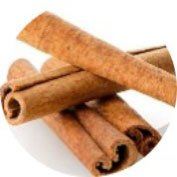fragrances
Raw Materials
The raw materials for the production of perfumes have different denominations depending on their origin, and a perfume can be made up of more than hundreds of these. These raw materials include: - Natural: Essential oils extracted from all parts of the plant. - Natural Identical: They exist in nature, but are copied identically at the laboratory level. - Synthetics: New creations that do not exist in nature. They are obtained by chemical processes.
categories
Fine Fragrances: Inspired by the most recognized and innovative fragrances on the market:
• Splash – Concentration 1% • Eau de cologne – Concentration ~5% • Eau de toilette – Concentration ~10% • Eau de parfum – Concentration ~15% • Parfum – Concentration 15-40%
Personal Care
Olfactory compositions that highlight the benefits of designer skin care products. Some of its uses: • Creams • Soaps • Scrubs • Hair care • Antibacterial gel • Powders • Deodorants • Suntan lotions • Other body care products.
House Hold e Industrial
Fragrances that provide benefits at the time of use that last on surfaces and textiles, generating a pleasant experience. Some uses: • Disinfectants • Air fresheners • Softeners • Detergents • Toilet paper • Facial tissues • Liquid and bar soaps • Candles







